Before you start growing smoking tobacco in your dacha, answer yourself this question: why do you need it? In order to get shag or insecticide to repel garden pests? Both the first and second purposes of growing tobacco are hardly advisable.
It is not safe to grow self-gardens for rolling cigarettes. By growing tobacco and drying its leaves, you can independently determine the nicotine content in them? Of course not.And it, depending on the variety, agricultural cultivation technology, raw material processing technology, can range from tenths to four percent and more.
With a low nicotine content, smoking homemade cigarettes will not bring satisfaction to heavy smokers, and a high percentage of nicotine will have a detrimental effect on health. The uncontrolled use of tobacco dust and tobacco infusions to control garden pests is also unsafe for people.
It is also worth remembering that tobacco is a nightshade crop and therefore it is not easy for it to find beds where potatoes, tomatoes, peppers, eggplants, physalis, and petunia have not been grown for several years.
Belonging to this family is fraught with viral diseases that can spread from tobacco to favorite garden crops and vice versa.
But having warned about the negative consequences of growing tobacco, it’s time to talk about the agricultural technology of this crop.
Growing smoking tobacco through seedlings
There are over fifty types of tobacco, but only two are considered cultivated. The plants of one are the raw materials for producing shag, the plants of the other are for tobacco. Shag can be grown throughout Russia, but tobacco can only be grown south of the 55º parallel.
An adult plant grows up to one and a half meters. The stem is straight. The leaves are entire, oval. The flowers are collected in a paniculate inflorescence at the top of the stem. The fruit is a multi-seeded capsule. The seeds are very small: there are 10-15 thousand of them in one gram. The root system is branched, penetrating deeply into the soil.
Most varieties belong to long-day plants: they enter the flowering and fruiting phase with 15-16 hours of daylight.
At what temperature to grow. Tobacco is heat-loving.Even in the southern regions of the country it is grown through seedlings. They begin to sow in early March in a mixture of humus, garden soil and sand (2:1:1). During the pre-emergence period, the temperature is maintained at 27-28 degrees. For emerging seedlings, it is lowered to 18-20 degrees. Provide good lighting.
Caring for seedlings. Water the seedlings without waiting for the soil to dry out. But a week before transplanting into open ground, watering is reduced, and two days later it is stopped. By the time of planting in open ground, the seedlings should have 5-6 true leaves and be 12-15 cm high.
Planting in open ground
Hardened seedlings are planted in open ground after the threat of frost has passed. The site is prepared in advance, choosing a place protected from the wind. Tobacco grows well after green manure (cereals, legumes).
It is not recommended to grow it after potatoes, tomatoes, peppers, eggplants, physalis, and return it to its original place earlier than after 2-3 years. Tobacco responds positively to humus and compost added before planting (2-3 kg per sq. m).
The seedlings are planted in pre-watered soil, deepening the stem by 3-4 cm. You can go deeper, but do not cover the growth point. Per square meter place 4-5 plants of large-leaved or 6-7 medium-leaved varieties.
During the initial growth period, the soil on the site is moistened, increasing the rate of water consumption as the plants grow. On light soils, water more often than on heavy soils. By the time of harvesting, the intensity of watering is reduced. After each watering, the row spacing is loosened.
Tobacco is heat-loving, but temperatures above 35 degrees are unfavorable for it: young plants may die, and adults are delayed in their development.
Tobacco feeding
In the first half of the growing season, tobacco needs increased nitrogen nutrition. But overfeeding with nitrogen reduces the quality of the raw material: it turns out rough, when burned, it smells unpleasant. Nitrogen fertilizers are applied before planting seedlings - 2-3 tbsp. spoons per sq. m.
Phosphorus and potassium are needed throughout the growing season. Phosphorus promotes earlier flowering and leaf ripening. Excess phosphorus leads to premature aging of leaves. Tobacco also needs good potassium nutrition, but again without excess.
Excess potassium reduces the quality of tobacco: its smell becomes unpleasant. Typically, potassium sulfate and superphosphate are added during autumn digging - up to 0.5 cups per square meter. m.
When planting, you can add complex fertilizers dissolved in water (2 tablespoons per square meter) containing equal amounts of nitrogen, phosphorus, and potassium.
For fertilizing, you can use organic infusions. They are placed in furrows made with a hoe in the middle of the rows.
To obtain good raw materials, plants are pinched (side shoots are removed) and topped (inflorescences are cut off) during the growing season.
When tobacco is harvested - samosad
Harvesting begins when the leaves acquire a slight yellowish tint. The lower leaves are broken off first - 3-4 from each plant. The second collection is increased to 3-5, the third - to 5-7 leaves. Then the number of harvested leaves begins to be reduced.
Remove the leaves in the morning after the dew has dried and in the evening. Before harvesting, the lowest (seedling) leaves are removed.The broken leaves are placed blade to blade, petiole to petiole. Then, using a large needle, the leaves are strung on twine so that they do not stick to each other.
The first phase of drying the leaves is carried out at a temperature of 25-35 degrees and air humidity of 75-90 percent. After the leaves turn from green to yellow, they are dried in the sun.
Pest control infusion
Pour 0.5 kg of dry tobacco leaves into 10 liters of hot water and leave for two days. Before spraying, add 40 g of laundry soap dissolved in water, dilute it half with water and treat the plants against aphids, leaf rollers, spider mites, onion and cabbage moths, and slugs.
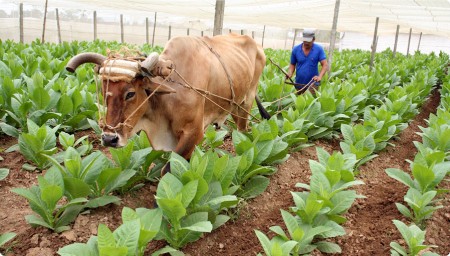
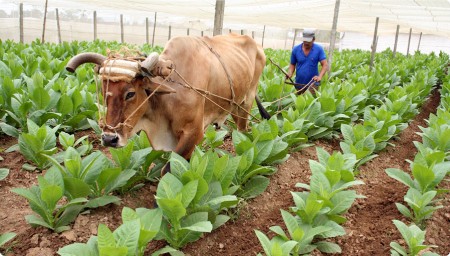
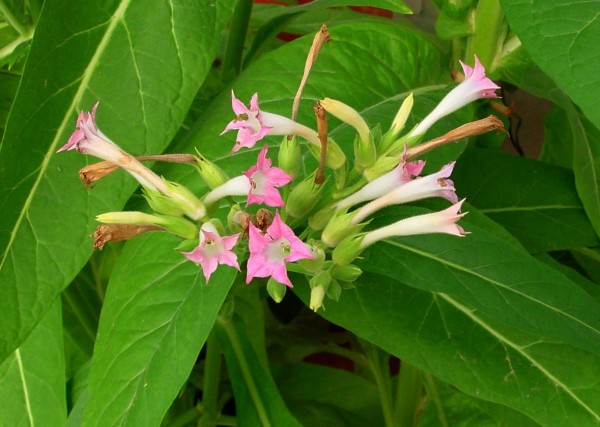
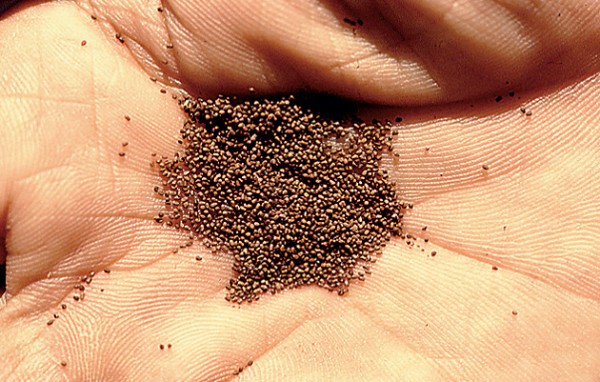
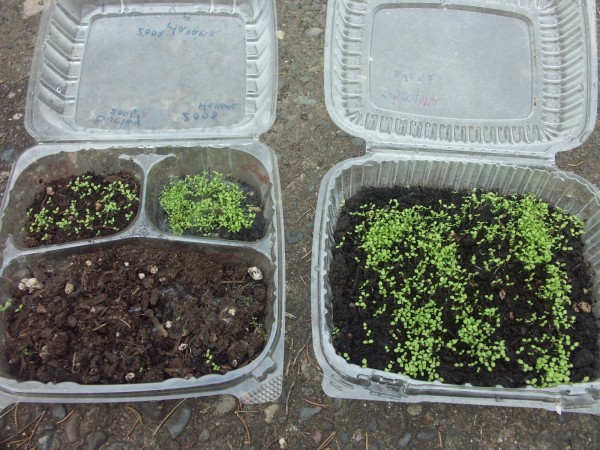
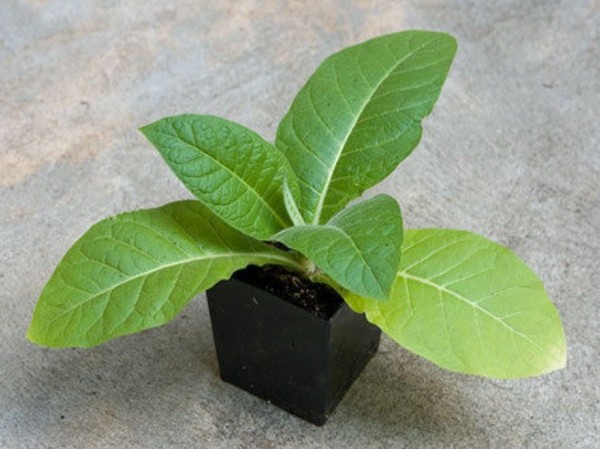
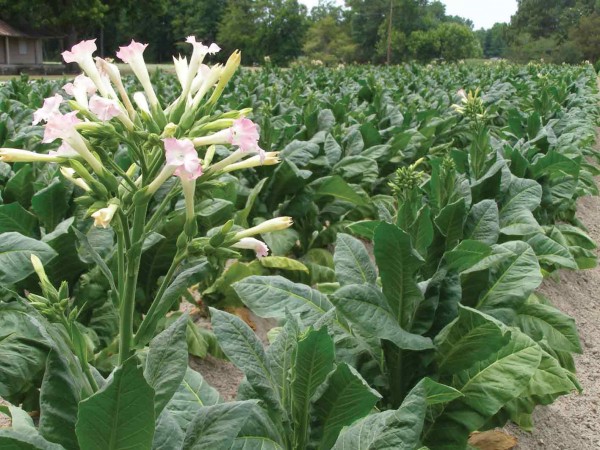
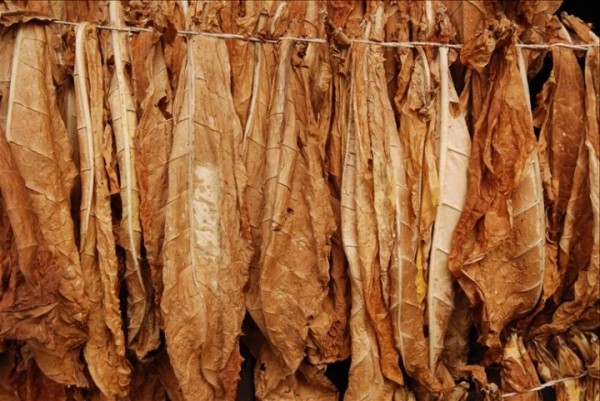


 CUCUMBERS NEVER GET SICK, I'VE BEEN USING ONLY THIS FOR 40 YEARS! I SHARE A SECRET WITH YOU, CUCUMBERS ARE LIKE THE PICTURE!
CUCUMBERS NEVER GET SICK, I'VE BEEN USING ONLY THIS FOR 40 YEARS! I SHARE A SECRET WITH YOU, CUCUMBERS ARE LIKE THE PICTURE! You can dig a bucket of potatoes from each bush. Do you think these are fairy tales? Watch the video
You can dig a bucket of potatoes from each bush. Do you think these are fairy tales? Watch the video
 How our fellow gardeners work in Korea. There is a lot to learn and just fun to watch.
How our fellow gardeners work in Korea. There is a lot to learn and just fun to watch. Eye trainer. The author claims that with daily viewing, vision is restored. They don't charge money for views.
Eye trainer. The author claims that with daily viewing, vision is restored. They don't charge money for views. A 3-ingredient cake recipe in 30 minutes is better than Napoleon. Simple and very tasty.
A 3-ingredient cake recipe in 30 minutes is better than Napoleon. Simple and very tasty. Therapeutic exercises for cervical osteochondrosis. A complete set of exercises.
Therapeutic exercises for cervical osteochondrosis. A complete set of exercises. Which indoor plants match your zodiac sign?
Which indoor plants match your zodiac sign? What about them? Excursion to German dachas.
What about them? Excursion to German dachas.
Here is the book: “Tobacco Grower’s Handbook”, publishing house “Kolos”, 1965.
Planting, cultivation, field care, diseases, tobacco pests and their control, tobacco harvesting, drying, storage are described in detail.
I remember as a child I snatched my father’s shag from the attic of the house)) it was nuclear. Now, as an adult, I will be growing tobacco for seven years. I made this activity my hobby and am happy as an elephant. I am very glad that I am no longer dependent on store-bought cigarettes, which only look like cigarettes.
Alexey, tell us more about growing. I want to try
in the 90s I grew self-gardens. This year I was imprisoned again, although I no longer smoke.